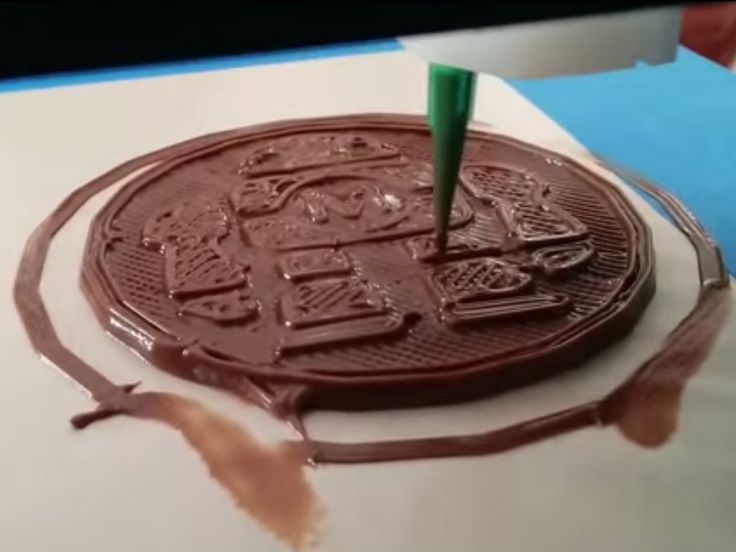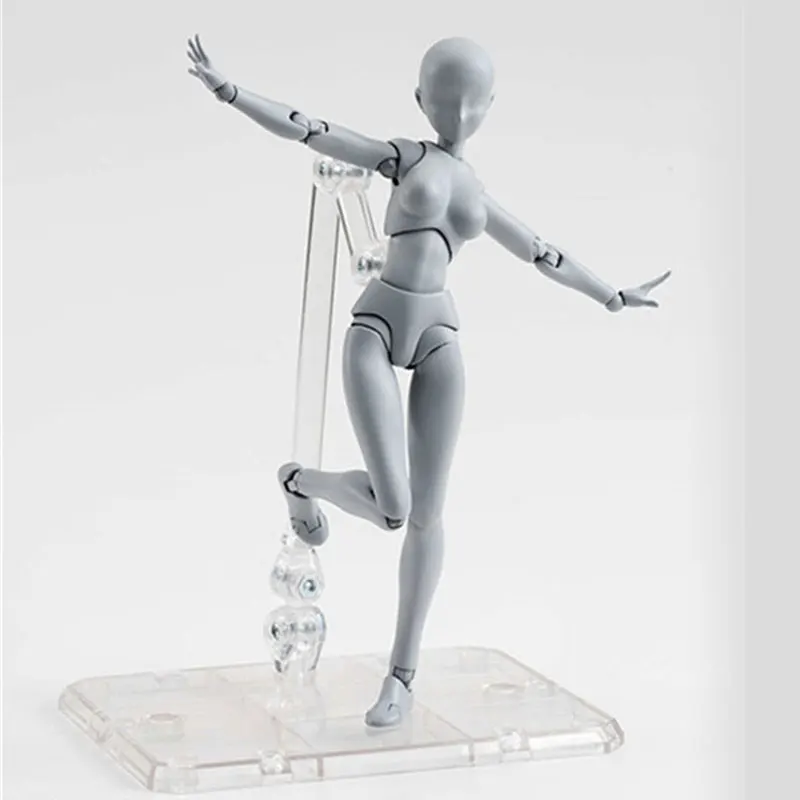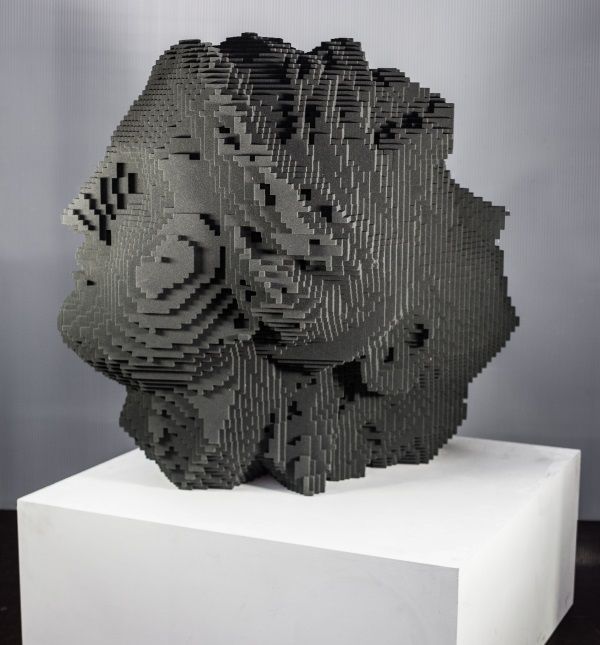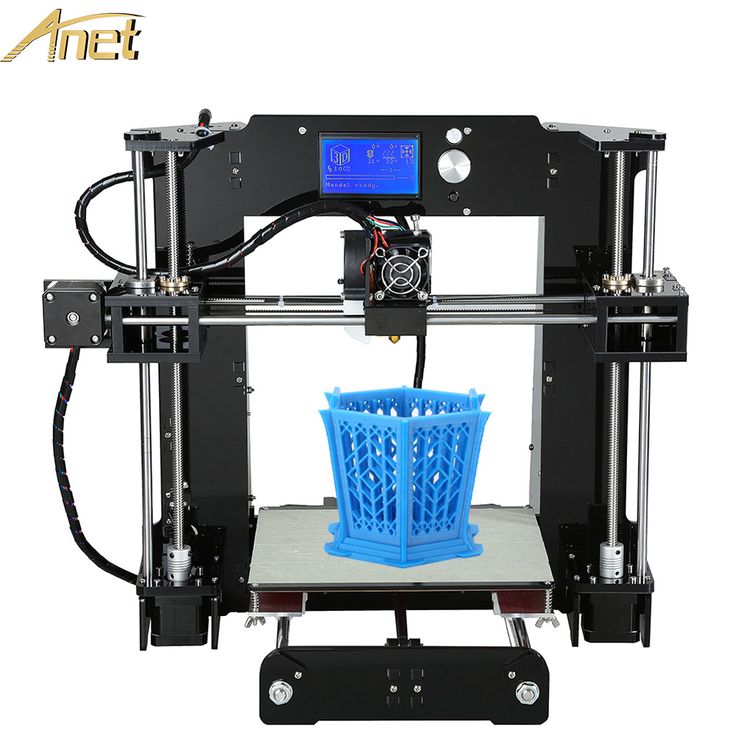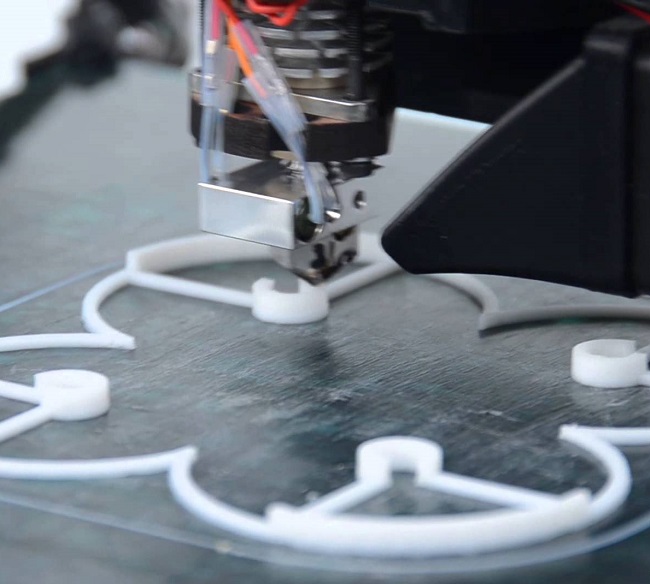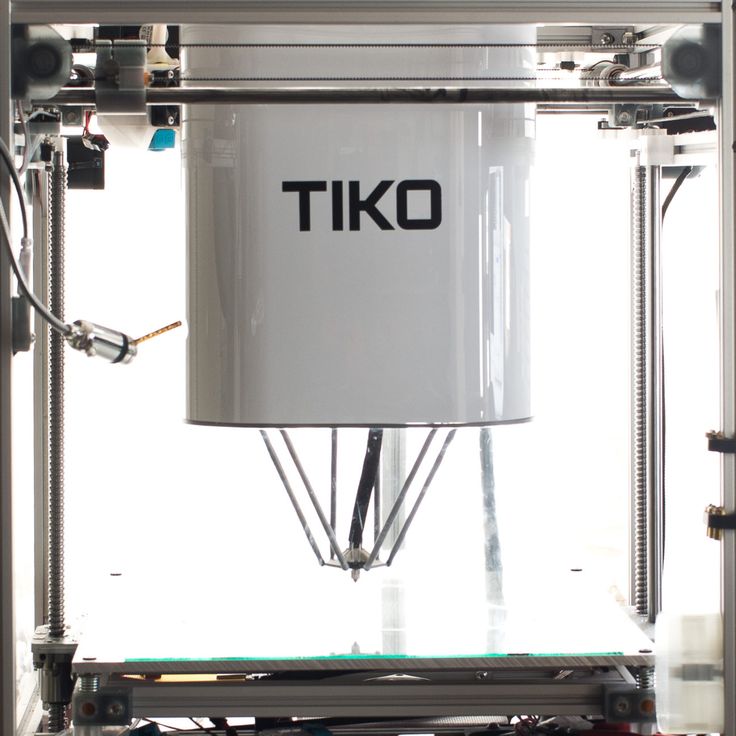3D print restaurant
LONDON | Food Ink.
The world’s first 3D-printing restaurant opens its doors to an exclusive group of guests on three consecutive evenings at
8 Dray Walk in Shoreditch.By now you’ve heard of 3D-printing, but did you know that you could soon be downloading dessert and getting that pizza delivered by email?
Presenting Food Ink – The World’s First 3D-Printing Restaurant.
At our utterly unique and fully interactive “print-out pop-ups,” all the furniture, all the utensils — and yes, all the food! — is produced through live 3D-printing.
Our official world premiere takes place this July 25-26-27 at 8 Dray Walk in Shoreditch, in the heart of London’s creative and high-tech epicentre.
On Tuesday 26 July and Wednesday 27 July from 2 PM – 6 PM, Food Ink is open to the public to come sample 3D-printed snacks, get hands-on with our 3D-printers and 3D-pens, relax on our 3D-printed furniture, and explore our exciting futuristic environment.
On Monday 25 July, Tuesday 26 July, and Wednesday 27 July, we host an exclusive gathering of 10 dinner guests who will join us at our 3D-printed dinner table at 8 PM to share the world’s most futuristic gourmet experience.
Our dinner guests will be treated to a one-of-a-kind, nine-course food experience prepared by top chefs Joel Castanye and Mateu Blanch, and produced via live real-time 3D-printing right in front of our guests’ eyes. Chef Castanye runs one of Spain’s most acclaimed new restaurants, La Boscana, and he worked previously for many years at the legendary elBulli when it was ranked the number one restaurant in the world for a record five times.
The event is also livestreamed online to the world, so even those unable to secure a seat at the table can still marvel at the tasty creations being magically 3D-printed right before their eyes.
Our Founding Partner is byFlow, the inventor of the world’s first portable multi-material 3D-printer.
Our tables, chairs and lamps are some of the world’s first functional 3D-printed furniture, created specifically for our restaurant by Zaha Hadid’s former protégé Arthur Mamou-Mani and unveiled for the first time on our opening night.
Our guests will be also dining with fully 3D-printed utensils custom-designed for us by Polish artist Iwona Lisiecka and 3D-printed by BCN3D Technologies. Drinks and treats are sipped and scooped from 3D-printed cups and plates 3D-printed by WASPVirtual reality headsets, wall-to-wall visual projections and AI-composed music together provide an immersive environment and a thrilling glimpse of the future.
This is the first time in the world that any initiative involving 3D-printed food has ever been executed with so many elements and anywhere approaching this level, and it represents a major step forward in technology, food, and design, all in a single event.
The goal of Food Ink is to use the universal language of food as a fun and accessible way to promote awareness about the amazing possibilities of 3D-printing and other promising new technologies. Our 3D-printing dinner series serve as a platform for a public conversation about how these emerging technologies are rapidly challenging and changing the way we eat, create, share and live.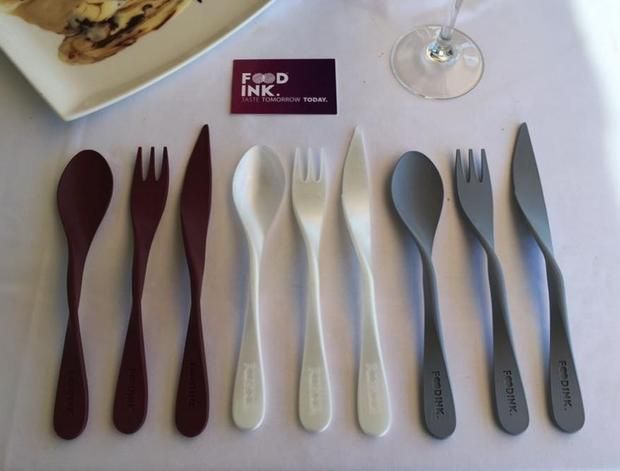
Food Ink is a completely new type of theme restaurant and an innovative food technology brand created by Antony Dobrzensky. Our London launch is only the beginning and we are soon bringing this extraordinary new restaurant format to a number of other innovative cities around the world.
Taste the future on YouTube, Twitter and Facebook.
GALLERY | Food Ink.
Food Ink at YOURS Restaurant, Barcelona, Spain
In December 2016 we collaborated with YOURS Restaurant in Barcelona to present the world’s only fully 3D-printed dinner experience. We were honoured to 3D-print a personalized 12-course dinner for some very special guests including International popstar Shakira and supermodel-yogi Vanesa Lorenzo alongside legendary footballers Gerard Pique and Carles Puyol!
Food Ink at La Boscana, Lleida, Spain
In November 2016 we collaborated with Michelin-star La Boscana restaurant (Lleida, Spain) to present Spain’s first ever fully 3D-printed dinner. Buen provecho!
Food Ink in London, United Kingdom
At Food Ink we create edible art prepared by the finest chefs with fresh natural ingredients and 3D-printed live using the revolutionary byFlow Focus 3D-printer. Our international launch is in London this Summer 2016 and we will be coming soon to a city near you.
Food Ink at Villa Flora, Venlo, The Netherlands
Our 3D-printing pop-up restaurant in the Netherlands was a tremendous success! We have been receiving many positive emails from our guests as well as curious onlookers who gathered for the April 12th event at the beautiful new Villa Flora in Venlo, the Netherlands.
An eclectic eight-course dinner was 3D-printed and served using our remarkable byFlow Focus 3D-Printers, prepared with fresh natural ingredients and borrowing innovative multi-sensory techniques from the world of molecular gastronomy.
We were honoured to present this utterly unique and world-class gourmet experience in collaboration with some of Europe’s best chefs, including the legendary Joel Castanye. Chef Castanye currently runs the incredible La Boscana restaurant in Lleida, Spain, and previously worked with elBulli when it was the world’s number one ranked restaurant.
Menu concept and dishes were developed by founding partner 3D Samba.
Dinner began at sunset and as it grew dark outside, our guests toasted champagne served in test tubes, tried on exclusive 3D-printed jewelry gifts from Diaz London, and basked in the glow of our 3D-printed lamps from Mamou-Mani.
Introducing the Food Ink 3D-Printed Cutlery Series
Designed by talented Polish artist Iwona Lisiecka and 3D-printed by Barcelona-based BCN3D Technologies on their incredible Sigma machines. We’re here to get you through dinner in style. And if you don’t feel like doing the dishes, we’ll just print you some more. 😉
We’re here to get you through dinner in style. And if you don’t feel like doing the dishes, we’ll just print you some more. 😉
Don’t take a seat, make a seat!
At Food Ink – The World’s First 3D-Printing Restaurant, you don’t just “take a seat” — you make it! Presenting the exclusive world premiere of The Smoke Stool, custom designed by visionary architect Arthur Mamou-Mani. 3D-printed, laser-cut and assembled by Mamou-Mani Ltd. and FabPub on Hackney Road in London, UK.
Bits and Bytes
Come try our “Fish and Chips:” super-healthy toasted seaweed with computer-chip circuit patterns 3D-printed out of kimchi fish mayonnaise and with just enough kick of wasabi. An iconic British dish reinvented for the digital generation and naturally part of our London menu.
Meet the best 3D-printing chefs in the world
When you’re doing the world’s first, you need the world’s best. We work with only the finest chefs to bring you not only the most futuristic food but also the most exquisitely delicious.
We work with only the finest chefs to bring you not only the most futuristic food but also the most exquisitely delicious.
We are thrilled and honoured to collaborate with Chefs Joel Castanye and Mateu Blanch of La Boscana, one of Spain’s best restaurants and one of the most innovative centres for new concepts in gastronomy.
Chef Castanye worked previously at the legendary elBulli when it was ranked the number one restaurant in the world for a record five times. He loves our 3D-printers and we love his food, so it’s a match made in foodie-geek heaven!
The future is here. And it tastes awesome.
The Future Looks Bright
Just another Friday night building and testing our original 3D-printed furniture here at Food Ink – The World’s First 3D-Printing Restaurant. Our table comfortably seats 10, so bring your friends!
“In Moscow, you can already taste squid made on a 3D printer” – The City, 07/14/2021
In “The City. We're talking," restaurateur Dmitry Levitsky spoke about the food of the future, why robots are replacing waiters, and where Russian cuisine has disappeared (not to be confused with Soviet cuisine).
Food from a 3D printer
The technology of printing food on a 3D printer appeared not so long ago. Although we saw her at an exhibition in the USA two or three years ago. It all started with a confectionery, but now in one of the restaurants in Moscow you can try a squid made on a 3D printer, and it cannot be distinguished from the one that lived in the sea and was specially caught. But this, of course, is a technology of a very distant future, when humanity will face a shortage of squid for all the inhabitants of the world.
Robot in the kitchen
Video: Robo Hunter/YouTube
A robot instead of a cook or a waiter is a real future. Now there are already fast food chains where work is organized completely automatically. A person comes, orders, a robotic system makes fried wings and gives them out.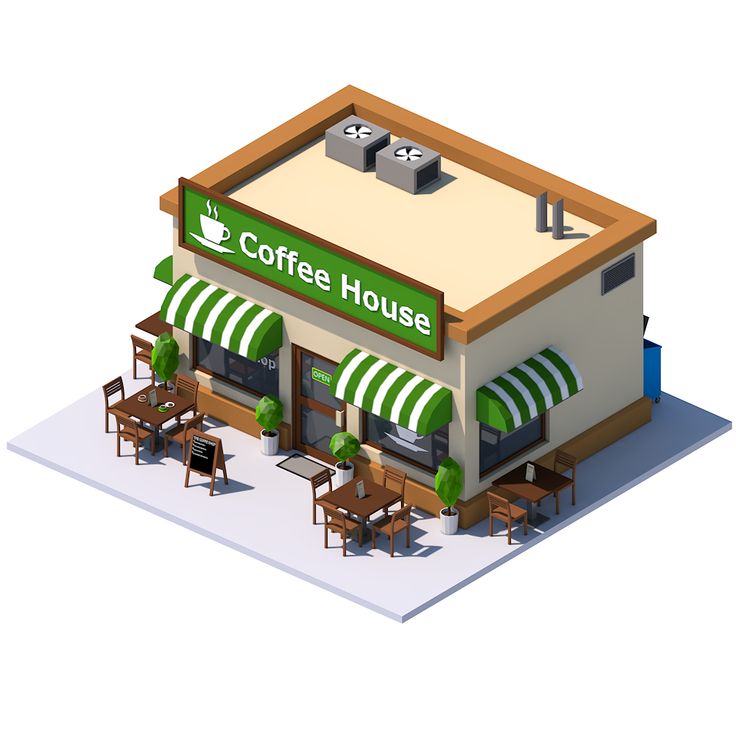 Many people go to this. Cafes will become such big automatic feeders. But there will always be places where you can get emotions, communication, mood and dialogue. One cannot replace the other.
Many people go to this. Cafes will become such big automatic feeders. But there will always be places where you can get emotions, communication, mood and dialogue. One cannot replace the other.
Artificial intelligence instead of people
There will come a time when being served by a person in any service sector will become the privilege of rich people. For example, if a person is poor, then his children will be taught by robots, and wealthy people will be able to afford a human teacher. Probably the same will happen with restaurants.
Struggle for the consumer
Does the person who orders home delivery take a piece of bread from restaurants or shops? Surveys show that delivery is now more competitive with going to the store. Delivery discourages people from cooking at home, but not going to restaurants.
Is delivery always good?
A very limited set of dishes is suitable for delivery. The dish dies within three to five minutes on distribution.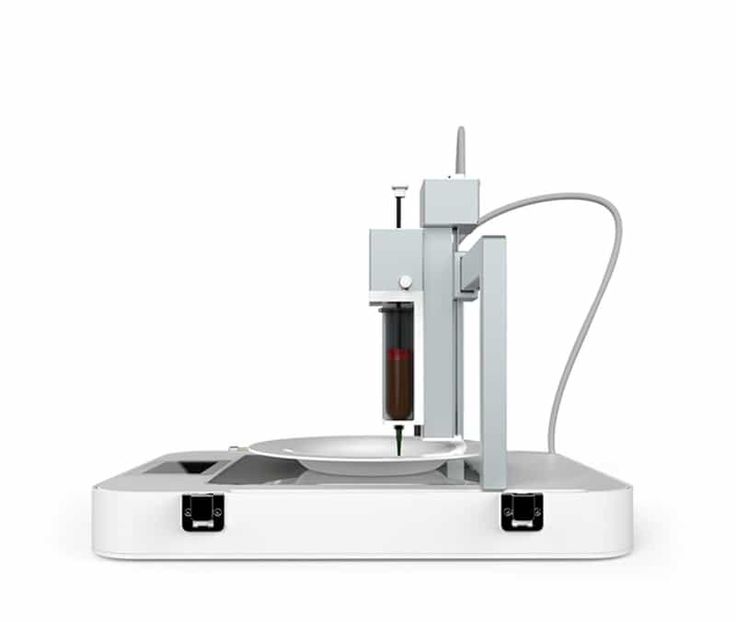 And when it travels for 40 minutes in boxes - sometimes in the heat, sometimes in the cold - it is very doubtful that it will arrive in the best possible way. Lettuce flows, pasta boils in a thermobox, a medium-roasted steak cannot be eaten when cooled down. Even sushi, which is very popular in delivery, should be served with warm rice. When it cools, it sticks together into a lump. For delivery, you need a completely different menu, which the chef immediately comes up with not on a plate, but in a box.
And when it travels for 40 minutes in boxes - sometimes in the heat, sometimes in the cold - it is very doubtful that it will arrive in the best possible way. Lettuce flows, pasta boils in a thermobox, a medium-roasted steak cannot be eaten when cooled down. Even sushi, which is very popular in delivery, should be served with warm rice. When it cools, it sticks together into a lump. For delivery, you need a completely different menu, which the chef immediately comes up with not on a plate, but in a box.
Moscow street food
Street food in Moscow is getting better and more varied. If earlier it was entirely associated with large international burger-chicken companies or some incomprehensible shawarma, now there is enough street food. Muscovites no longer face the question of where to go for a bite to eat.
The evolution of Moscow gastronomy
I started in the restaurant business a long time ago, in those days the city was a collection of network concepts.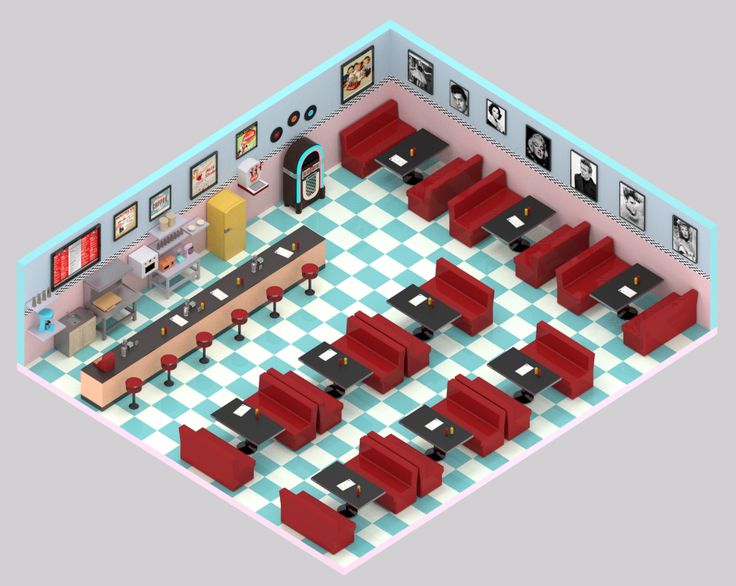 You walked along any street, and there were sure to be "Chocolate Girl", Il Patio, "Coffee House". Then they were replaced by brighter and more individual projects. Following this, a beloved small business began to develop. The city was filled with many different points with very simple and understandable food. This is the same case when three friends organized, chipped in and opened some kind of coffee shop or burger. In such stories, a lot of different food is born. Street food markets, gastroclusters, markets where beginners can try themselves have become a great help to this.
You walked along any street, and there were sure to be "Chocolate Girl", Il Patio, "Coffee House". Then they were replaced by brighter and more individual projects. Following this, a beloved small business began to develop. The city was filled with many different points with very simple and understandable food. This is the same case when three friends organized, chipped in and opened some kind of coffee shop or burger. In such stories, a lot of different food is born. Street food markets, gastroclusters, markets where beginners can try themselves have become a great help to this.
Russian folk food
We have a very complicated history with Russian cuisine. You can hardly find restaurants with it in Moscow. There are maybe five restaurants that deal with our national cuisine purposefully. Many chefs and restaurateurs are now puzzled by this question. If you come to Spain, then paella is everywhere and everyone eats it. You come to Italy - pizzerias at every turn. The main cuisine in the country is the local cuisine.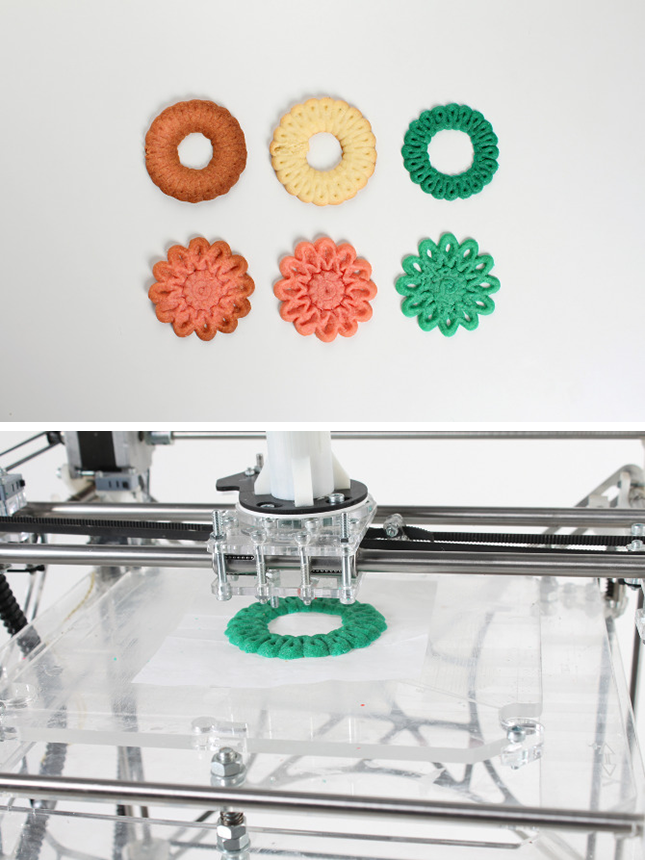
Who killed Russian cuisine
Soviet cuisine killed Russian. “The Book of Tasty and Healthy Food” was published at a time when there were no products in the country and our entire cuisine was reduced to vinaigrettes, olivier - many dishes seasoned with mayonnaise. These traditions arose from hunger, from the lack of quality products. We confuse two concepts - Russian and Soviet. Before the revolution, we were a very gastronomic country. We brought the French, they cooked our dishes. Our turnip has been reimagined with French influence. But ordinary people traditionally ate "shchi and porridge - our food." Food 100 years ago was as simple as possible, and it’s not a fact that a modern person would like it. Modern chefs are now rethinking Russian cuisine, but it is still far from street food.
The City on July 13
Food of the future. How technology will change the usual lunch in a restaurant / Habr
The process of ordering food is improving every year in terms of digitalization.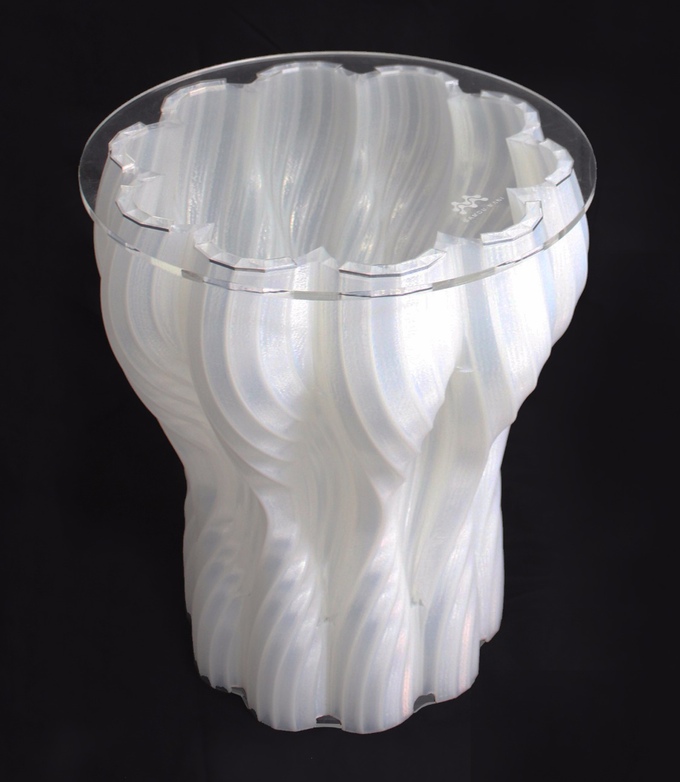 At the beginning of 2020, a significant part of the Russian population was skeptical about the delivery of groceries or ready-made meals home, however, the epidemiological situation around the world gave impetus to the development of various delivery aggregators and the simplification of order forms.
At the beginning of 2020, a significant part of the Russian population was skeptical about the delivery of groceries or ready-made meals home, however, the epidemiological situation around the world gave impetus to the development of various delivery aggregators and the simplification of order forms.
By 2030, we will see a change in trends both in the entire field of hotel and restaurant business (HoReCa) and in the food ordering segment. The focus of change will continue to be the customer, with their needs and preferences.
DNA menu
Prediction 2030: Personalized menus are a must for prestigious restaurants.
Based on the client's digital medical record, their DNA data, health status and taste preferences, a personal menu is formed. The source of data is open cloud information resources - replenished by the state, the users themselves and restaurants. This will make it possible to get away from the existing concept, within which the restaurant menu is the same for everyone.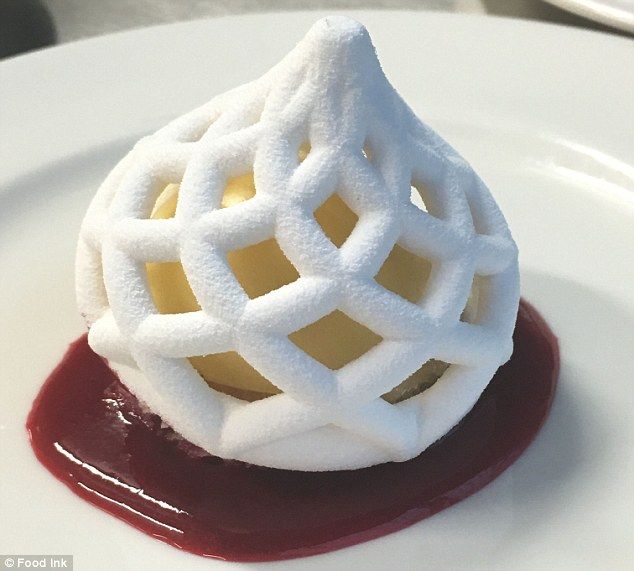
Prices in the menu change depending on the popularity of dishes, the current load of the kitchen, the availability of products in the "stop list".
Already today there are companies that, based on the results of DNA, form an individual diet for a person. For example, the project of such a restaurant is being prepared for opening in Tokyo, the capital of Japan. Sushi Singularity will use the DNA of its customers to create unique dishes and ensure that the ingredients used in the preparation are as compatible as possible with the diet and lifestyle of a particular client. The restaurant plans to use an artificial intelligence system that analyzes the data of the client, who will need to undergo a medical examination and create a medical profile as part of the restaurant service before visiting the restaurant. Based on medical data, the system can not only apply the right ingredients, but also create the right color and taste, as well as provide the right temperature and cooking method! In addition to direct data analysis, the restaurant will use its own agro-farm and cultivated products from cells (for example, its own cage-grown tuna or octopus meat), use 3D food printing, and use a special laser to give products unusual, complex and bizarre shapes.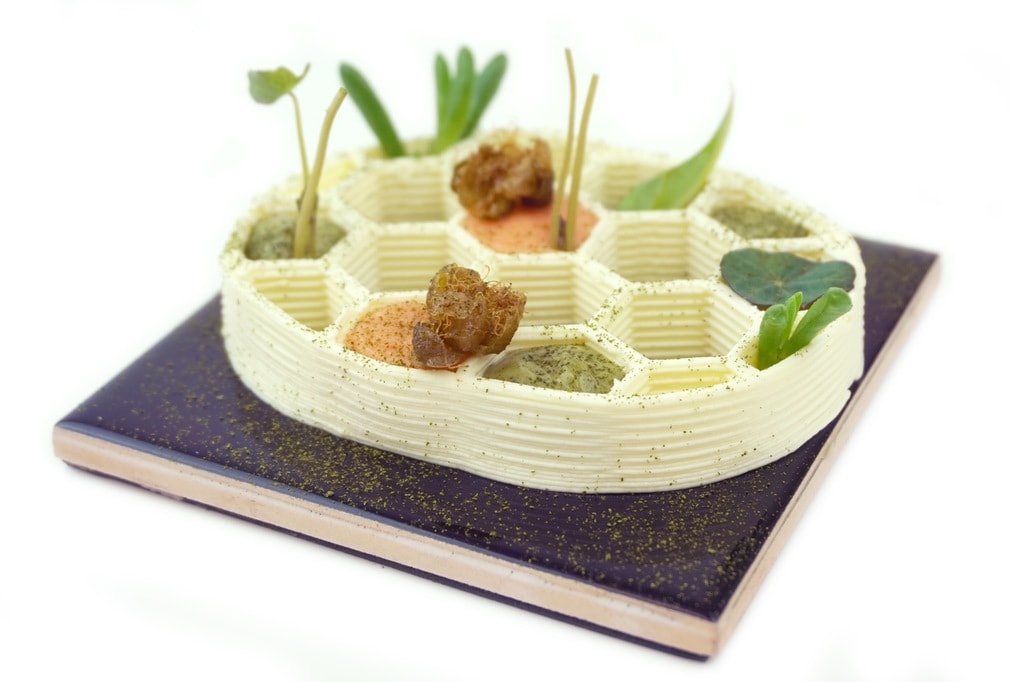
A culinary movement based on the subtle combination of ingredients and careful study, modification and control of the cooking process has been called "molecular cuisine". The origins of this trend date back to the 1970s. of the 20th century, when the British physicist of Hungarian origin Nicolas Kurti and the French chemist Hervé Thiess were united by their passion for the art of cooking. Scientists began to study the physical and chemical changes that occur during cooking and began to invent new methods for creating dishes with unusual shapes, textures and tastes. At 19In 1992, in Italy, Nicolas Curti and Herve Thies held a series of seminars for scientists and practicing chefs under the general title "Molecular and Physical Gastronomy". These meetings discussed new methods of food preparation and for the first time publicly voiced the suggestion that by understanding the physical and chemical processes involved in food preparation, traditional culinary methods and techniques could be improved.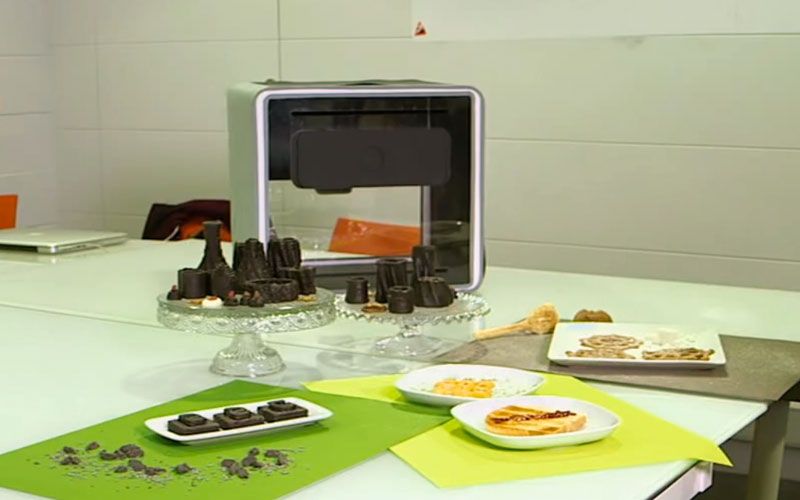 The famous phrase of Nicholas Kurti, uttered at one of the seminars, entered the world history of cooking: “The trouble with our civilization is that we are able to measure the temperature of the atmosphere of Venus, but we have no idea what is happening inside the soufflé on our table.” At the practical part of the seminars, scientists demonstrated how to cook meringue in a vacuum chamber, sausages using a car battery, how to make Baked Alaska biscuit ice cream - cold ice cream on the outside and hot biscuit inside - using a household microwave oven. At the same time, Herve Thies proposed isolating an enzyme that dissolves protein from pineapple juice and using it to turn meat into liquid jelly. The participants of these scientific-practical meetings became a kind of new thinkers in the field of gastronomy, striving to replace the "archaic" methods of cooking with a precisely verified scientific method. Among them are the current stars of molecular gastronomy - the chef of the Catalan restaurant "El Bulli" Ferran Adria and the British restaurateur and culinary specialist, owner of the legendary "The Fat Duck" Heston Blumenthal.
The famous phrase of Nicholas Kurti, uttered at one of the seminars, entered the world history of cooking: “The trouble with our civilization is that we are able to measure the temperature of the atmosphere of Venus, but we have no idea what is happening inside the soufflé on our table.” At the practical part of the seminars, scientists demonstrated how to cook meringue in a vacuum chamber, sausages using a car battery, how to make Baked Alaska biscuit ice cream - cold ice cream on the outside and hot biscuit inside - using a household microwave oven. At the same time, Herve Thies proposed isolating an enzyme that dissolves protein from pineapple juice and using it to turn meat into liquid jelly. The participants of these scientific-practical meetings became a kind of new thinkers in the field of gastronomy, striving to replace the "archaic" methods of cooking with a precisely verified scientific method. Among them are the current stars of molecular gastronomy - the chef of the Catalan restaurant "El Bulli" Ferran Adria and the British restaurateur and culinary specialist, owner of the legendary "The Fat Duck" Heston Blumenthal.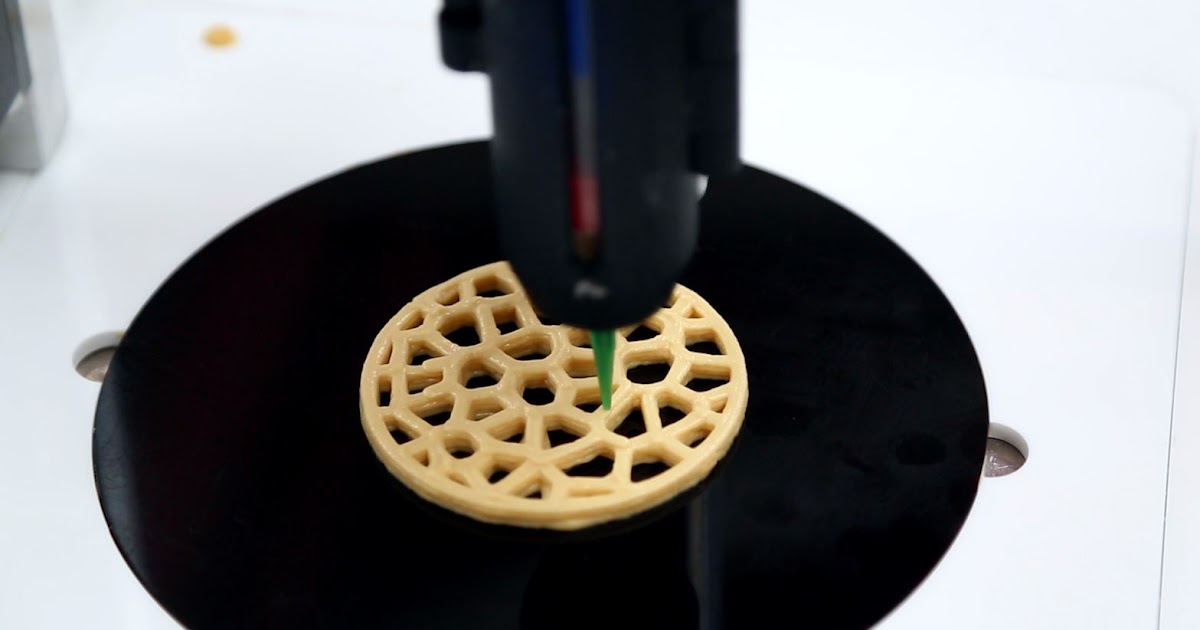
Molecular cuisine restaurants can also be found in Russia: in Moscow, the most famous establishments are the Japanese restaurant Nobu, founded by the Japanese chef Nobuyuki Matsuhisa together with the actor Robert de Niro and White Rabbit - the brainchild of restaurateur Boris Zarkov, in St. Petersburg - the restaurant " Gouache".
Delivery to the rhythm of life
Forecast 2030: 50% of all restaurant orders are made on delivery terms.
Analysis of customer behavior will allow the user to form the habit of ordering food at home. Depending on his movement and geolocation, as well as the time of the previous meal, the client will receive a notification with a certain set of dishes indicating the exact time and place of delivery. It remains only to click the "Confirm" button.
If earlier the search for food to order began with search engines such as Google or Yandex, then the modern user needs more convenient and efficient ways to order.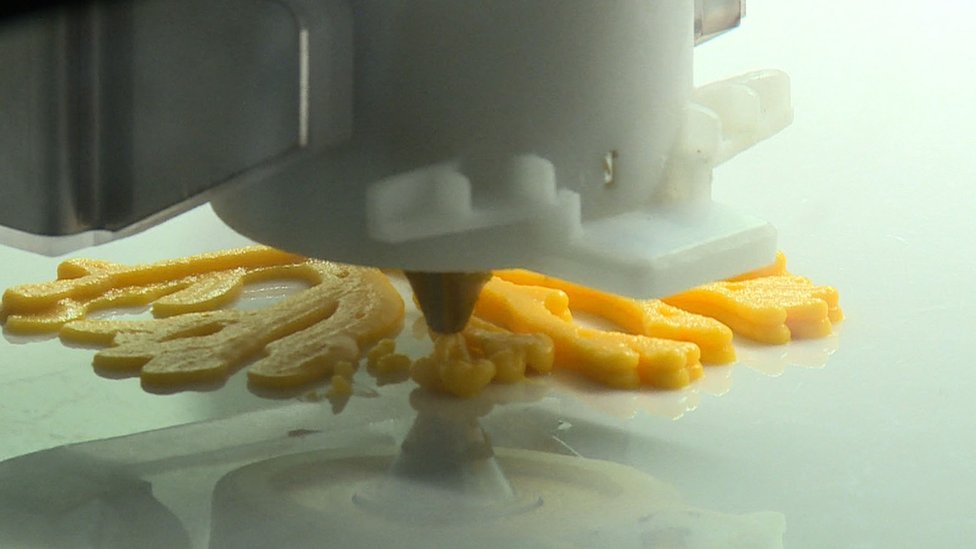 So the trend of searching for food has shifted from computer searches to mobile applications available on the phone. Basically, the search is carried out by the name of the dish “ordering sushi / pizza”, type of cuisine (“Italian home cooking”) or brand (“delivery from McDonalds”). Further, the service was further developed, it became important for the client not only the possibility of ordering a certain dish from a certain restaurant, but also getting it by a certain time.
So the trend of searching for food has shifted from computer searches to mobile applications available on the phone. Basically, the search is carried out by the name of the dish “ordering sushi / pizza”, type of cuisine (“Italian home cooking”) or brand (“delivery from McDonalds”). Further, the service was further developed, it became important for the client not only the possibility of ordering a certain dish from a certain restaurant, but also getting it by a certain time.
Augmented reality and food printing
Forecast 2030: Augmented reality and food printing as a way to attract and entertain customers in most chain restaurants, but not as the basis of the food preparation process.
When ordering food in a restaurant or when ordering delivery in the future, augmented reality technology is used. It allows you to increase interest in the restaurant's menu, and also encourages restaurateurs to create aesthetically beautiful dishes.
3D printers are available to most restaurants, which stand out not only for the chef's dishes, but also for the printed dishes, the ingredients of such dishes, and the quality of the print.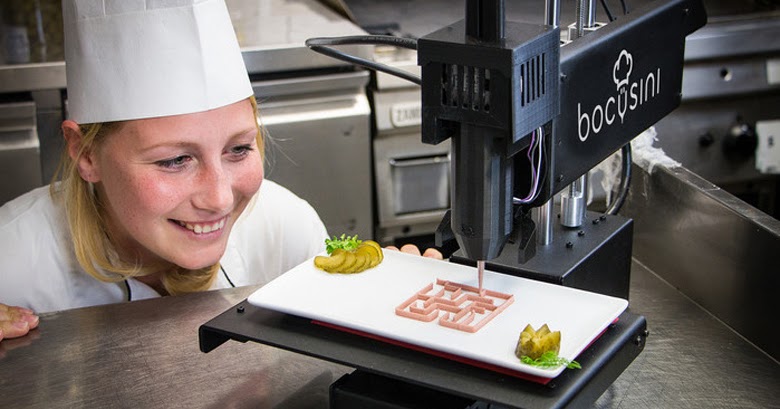 Perhaps, with the advent of the era of 3D food printing, the demand for dishes from chefs will decrease. But what type of food the customer will prefer when printed food becomes commonplace is hard to say.
Perhaps, with the advent of the era of 3D food printing, the demand for dishes from chefs will decrease. But what type of food the customer will prefer when printed food becomes commonplace is hard to say.
Already today, catering companies using 3D printers in their work are beginning to receive star ratings from the famous Michelin restaurant guide. Like, for example, the Spanish family restaurant Cocina Hermanos Torres, which has two! The founders of the restaurant say that the 3D printer allows them to produce dishes in such complex and unusual shapes that would be almost impossible to do by hand, and also the 3D printer contributes to minimizing waste and using ingredients more environmentally.
Augmented reality technologies are used by most restaurants, 3D menus are available to customers of all restaurants. A similar project has already been created by AeStar (Ukraine). The idea of this development appeared during the quarantine associated with the COVID-19 pandemic, when cafes and restaurants did not work or worked only through delivery.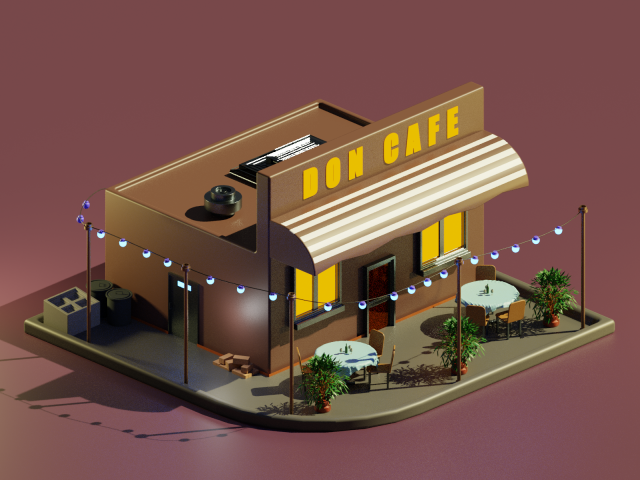 Therefore, for establishments whose website does not have photos of dishes that encourage them to order, the developers proposed to introduce a 3D menu, with which online visitors can choose a dish and view it through their smartphone, for example, on their table at home. The 3D menu also includes the ability to select a menu language for a foreign client, which will solve the problem of a language barrier in service.
Therefore, for establishments whose website does not have photos of dishes that encourage them to order, the developers proposed to introduce a 3D menu, with which online visitors can choose a dish and view it through their smartphone, for example, on their table at home. The 3D menu also includes the ability to select a menu language for a foreign client, which will solve the problem of a language barrier in service.
Augmented reality is also being used to entertain visitors. For example, Chipotle, an international Mexican restaurant chain, has an app called The Scarecrow designed to entertain customers and inform them about how the company purchases various ingredients for cooking. In addition, for the successful completion of game levels, visitors receive pleasant bonuses.
In addition to games, augmented reality is used in restaurants to project images and information onto various surfaces. Today, more than 50 restaurants around the world have installed the Le Petit Chef project from Skullmapping (Belgium).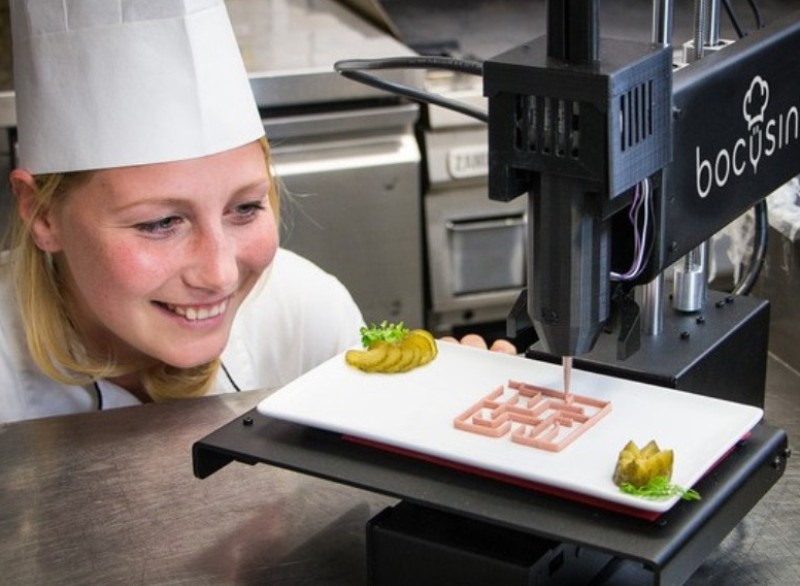 The application allows you to display 3D projections on the dining tables of customers. The tiny chef entertains the guest, brings the ingredients and demonstrates how the food is prepared. This short immersion in the process takes place while the ordered food is being prepared in the kitchen. After the presentation in augmented reality, real dishes are served.
The application allows you to display 3D projections on the dining tables of customers. The tiny chef entertains the guest, brings the ingredients and demonstrates how the food is prepared. This short immersion in the process takes place while the ordered food is being prepared in the kitchen. After the presentation in augmented reality, real dishes are served.
Delivery automation
Forecast 2030: delivery in large metropolitan areas will be carried out by quadcopters and mini-cars on autopilot .
At the same time, courier delivery will also be preserved, but it will be different. Postmates today delivers orders in Los Angeles using robots. Their mechanical couriers are somewhat reminiscent of a children's reduced cart from a supermarket, they have a height of about a meter, two front sensors instead of eyes, allowing the robot to navigate in space and go around obstacles. On top of the robot is a touch screen, which lights up the status "on delivery" (on delivery), if the robot delivers the order.
And the company Starship Technologies (Estonia) launched the work of unmanned delivery trucks in different countries of the world. Robots are capable of delivering small parcels within a radius of 6 km from the place of issue of the order. The order for delivery is made using a mobile application from restaurants and shops, which can also be used to track the route of the robot and its current location. Robots weigh less than 50 kg and move in space at a walking pace, which eliminates the possibility of knocking down a person and injuring him. Mechanical couriers are powered by electricity and are a completely environmentally friendly means of delivery.
Nuro has brought self-driving mini food delivery vehicles to the roads in California. In 2018, they managed to carry out a completely autonomous delivery of the order, and in 2019 they began cooperation with the famous international chain of pizzerias Domino'z Pizza. In 2020, the company began testing the second generation of autonomous unmanned vehicles.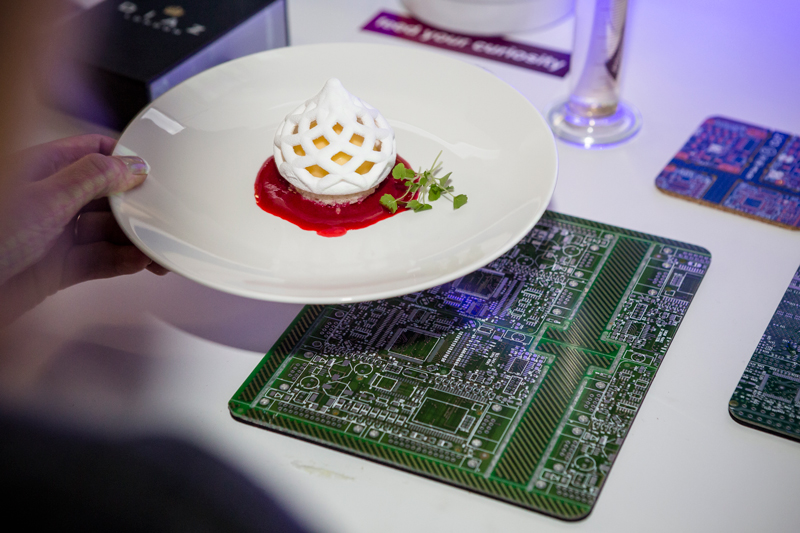
Russian companies are also implementing pilot projects using both unmanned aerial vehicles (drones) and ground delivery robots.
The first commercial drone food delivery in Russia was carried out by the DoDo Pizza chain, but this type of delivery was indicative. Delivery has a number of challenges (legislative restrictions, bad weather conditions, risk of theft, etc.) that have yet to be resolved.
Yandex was the first company in Russia to start using its own robots (rovers) for delivery. Initially, the mechanical courier was tested as part of the delivery of documents and small office supplies from Yandex headquarters in Moscow to another Moscow office. At the moment, robots deliver from restaurants in one of the districts of Moscow. Weights are placed in a compartment inside the body of the robot.
Restaurant service
Prediction 2030: robots will be used in most chain restaurants, other restaurants will have "exclusive" live communication.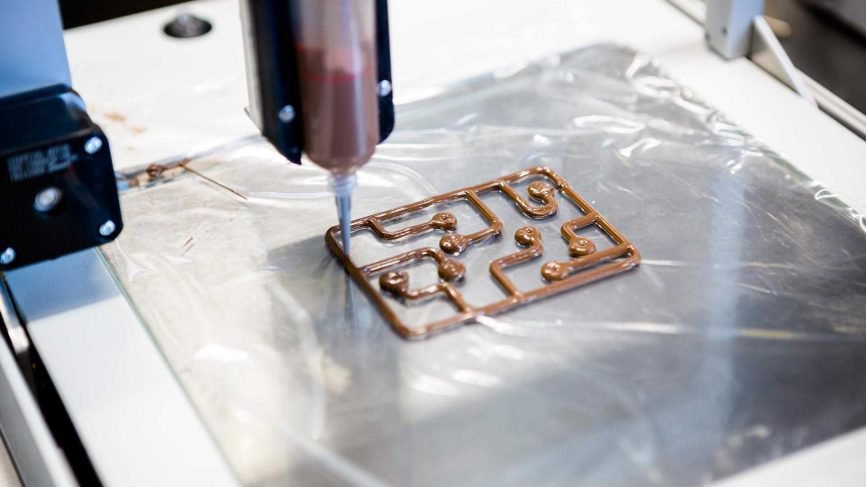
In 2030, restaurateurs will provide their customers with two types of service. They can be partially combined depending on the concept of a particular restaurant:
● robotic approach -
eliminates human interaction thanks to a digital menu at each table and robotic waiters. Today, at the Dawn Avatar Robot Café in Tokyo, these robotic waiters are controlled by people with disabilities. Even the chefs here can be robots - the system works both in takeaway restaurants and in ordinary restaurants.
China is not far behind: Country Garden, one of the largest real estate operators in China, opened a robotic restaurant complex in Guangdong province in 2020. The restaurant contains all the most advanced technologies. The establishment features Chinese cuisine, stew, fast food, as well as a wide selection of other dishes that are delivered to visitors in a matter of seconds. For 2000 sq.m. The modern restaurant complex employs more than 20 own robots that are engaged in the preparation and delivery of ordered dishes to customers.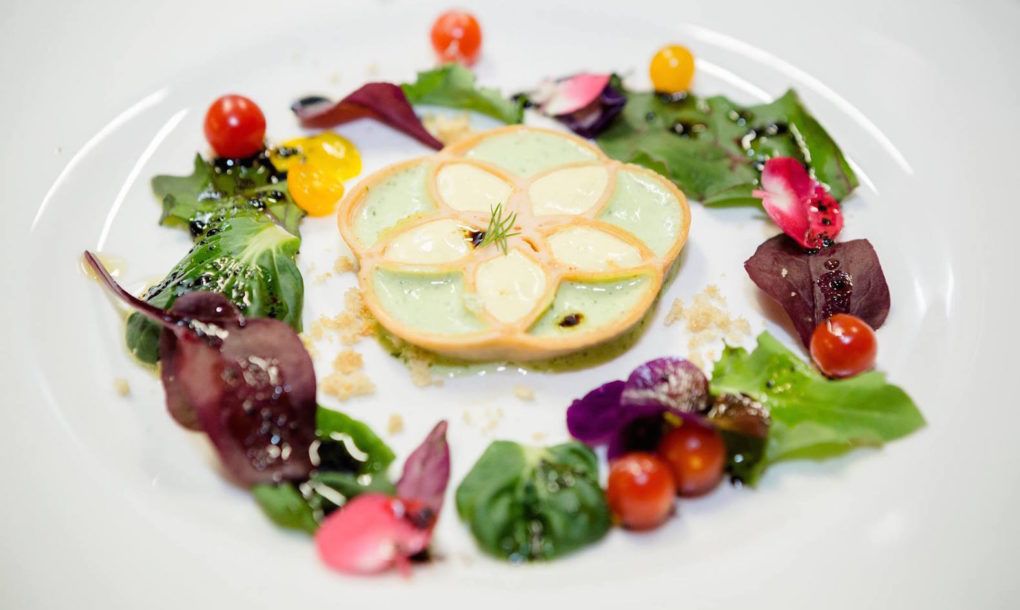 The robotic restaurant can serve about 600 people at the same time. Each of the restaurant's 200 menu items can be served in as little as 20 seconds.
The robotic restaurant can serve about 600 people at the same time. Each of the restaurant's 200 menu items can be served in as little as 20 seconds.
● “with a human face” approach
Human waiters paired with robots, robots deliver dishes to the table, but a person serves and explains the composition of dishes. One of Japan's leading robotics developers, SoftBank, has opened a Pepper Parlor cafe in Japan, where customers are served by robot employees along with regular staff. Machines take orders and communicate with visitors. Pepper Parlor employs three types of Softbank robots: the humanoid Pepper, as well as the dancer robot Nao and the cleaning robot Whiz.
Miso Robotics' Flippy is a robot chef designed for fast food restaurants. It is already used in such well-known chains as McDonald's, Burger King and Caliburger (USA). The robot is equipped with a control system that allows employees to see the number of orders in the queue, helps to set and control the temperature of food, and regulate the order queue so that the dishes are cooked in a certain order. At the moment, the artificial chef's menu contains about 20 dishes. Such a mechanical assistant will allow restaurant owners to save on food, reduce labor costs and free up more space in the kitchen.
At the moment, the artificial chef's menu contains about 20 dishes. Such a mechanical assistant will allow restaurant owners to save on food, reduce labor costs and free up more space in the kitchen.
Robocafe ideas are not new for Russia either: in 2019, the first cafe-coffee shop MontyCafe was opened in Russia, the only employee of which is the robot barista Monty. The first kiosk with a robot was installed in the Vodny shopping center (Moscow). Inside, in the robot's cabin, security cameras are installed, so it is under constant control. This is necessary in order to protect the robot from mistakes and from unscrupulous customers. The robot can pour coffee, drag a cup from the coffee machine to the client and dance, it is also planned to add functions for placing, adding sugar and drawing images or photos of clients on the foam. When no one orders anything from the robot, he dances, which delights the children, while the robot dances for free and exclusively for its own pleasure.